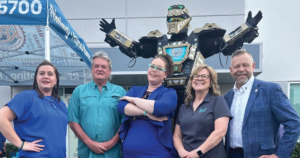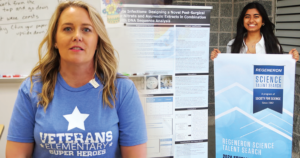
So, your favorite (or not) New York-transplanted editor is back for another rant about driving in New Tampa and Wesley Chapel — and really everywhere in Florida.
I’ve already complained about our self-deputized civilians who refuse to get out of the left lane (because they may be traveling the posted speed limit), despite the fact everyone who wants to drive a normal speed has to pass them on the right — and are still doing it despite Florida’s new law that says you can be ticketed for it. “Slower traffic keep right” isn’t just a slogan.
I’ve also previously explained why dedicated right turn exit and acceleration lanes when going from one major roadway to another are neither yield nor stop signs.
So, here’s Part 3 of this “helping you drive better” series — which I felt was particularly fitting as our recent drought ended and we began the rainy/hurricane season when the calendar turned to June — driving in the rain.
Let’s take a quick quiz on the subject:
1. Whenever you’re driving in the rain, you should:
a.) reduce your speed, b) allow yourself additional braking distance between you and the vehicle in front of you, c.) turn on your headlights if they’re not already on or on auto, d.) all of the above. The answer, as most everyone knows (except those who refuse to turn on their headlights in the rain), is d., all of the above.
2. When are the roads at their slipperiest or slickest?
a.) When it’s been raining heavily all day, b. When it first starts to rain, c.) The roads are always equally slippery, d.) I have no idea.
The answer to that one is actually b., because the oils that build up on the roadway when it’s dry outside rise to the surface and make the roads slicker than when it’s been raining all day and those oils have all been washed away. Sadly, this means that for many people, the answer, until now, was d.
Now for the toughie/trick question (despite the hint in the photo above):
3. When it is raining so hard that seeing the vehicles in front of you becomes difficult, you should:
a) Pull off to the side of the road and have your hazard lights flashing, b) Continue driving, but turn on your hazard lights, c.) Continue driving, but make sure that your headlights are on, reduce your speed and use extra caution or d.) I have no idea.
The “trick” part is that if it’s so bad that you really can’t see the vehicle in front of you, the answer should be a., but very few of us will choose to do that when we’re in a hurry to get to or from work or to a meeting or event that we can’t afford to pull over and wait it out, especially because you’re something of a sitting duck if someone else swerves off the road.
The most practical answer, in that case, is actually c. Those of you who picked b. might as well have picked d., because you are truly clueless — a fact that is re-proven to me almost every time it rains more than a drizzle here.
But, here’s why you don’t turn your hazards on in heavy rain, McFly — your hazard lights are for when you and/or your vehicle are in an emergency situation — you had to pull off the road to change a flat tire, your car breaks down in the middle of the road, etc.
If you’re already driving with your hazards on and your car breaks down (maybe because you’re driving through deep water and your car’s electrical system goes bad), how will the vehicle behind you know that your car has stopped working? The answer is usually by smashing into you from behind, which is normally the rear-ender’s fault, but not in this case.
As indicated on the sign in the photo, Florida law says “Driving in the Rain: Headlights On, Hazards Off,” which means that if you have an accident while violating this law, you would be the at-fault driver.
So, please: read the sign and obey it. Driving in the rain is tough enough without drivers who make up their own laws because they mistakenly think it’s easier to see flashers than it is steady lights.
WCNT-tv Keeps Building!
Check out the ad for WCNT-tv — Wesley Chapel & New Tampa Television — on page 43 of this issue. You’ll see some numbers that I’m very proud of. As of June 9, a little less than a year since we debuted the show — we have reached very close to three quarters of a million people and been viewed more than 350,000 times on YouTube and Facebook.
Our recent Neighborhohood Dining News segments about Little Italy’s Family Restaurant & Catering and Fushia Hot Pot Buffet & Asian Bistro each garnered thousands of views and have generated some new business at both locations. And, I think our most recent News segment about the Diverging Diamond Interchange (see story on page 6) and most recent Greater Wesley Chapel Chamber of Commerce Featured Business segment about American Wood Flooring are among the best work we’ve done to date.
Please view, like & share all of our WCNT-tv segments on YouTube & Facebook!




No comment yet, add your voice below!